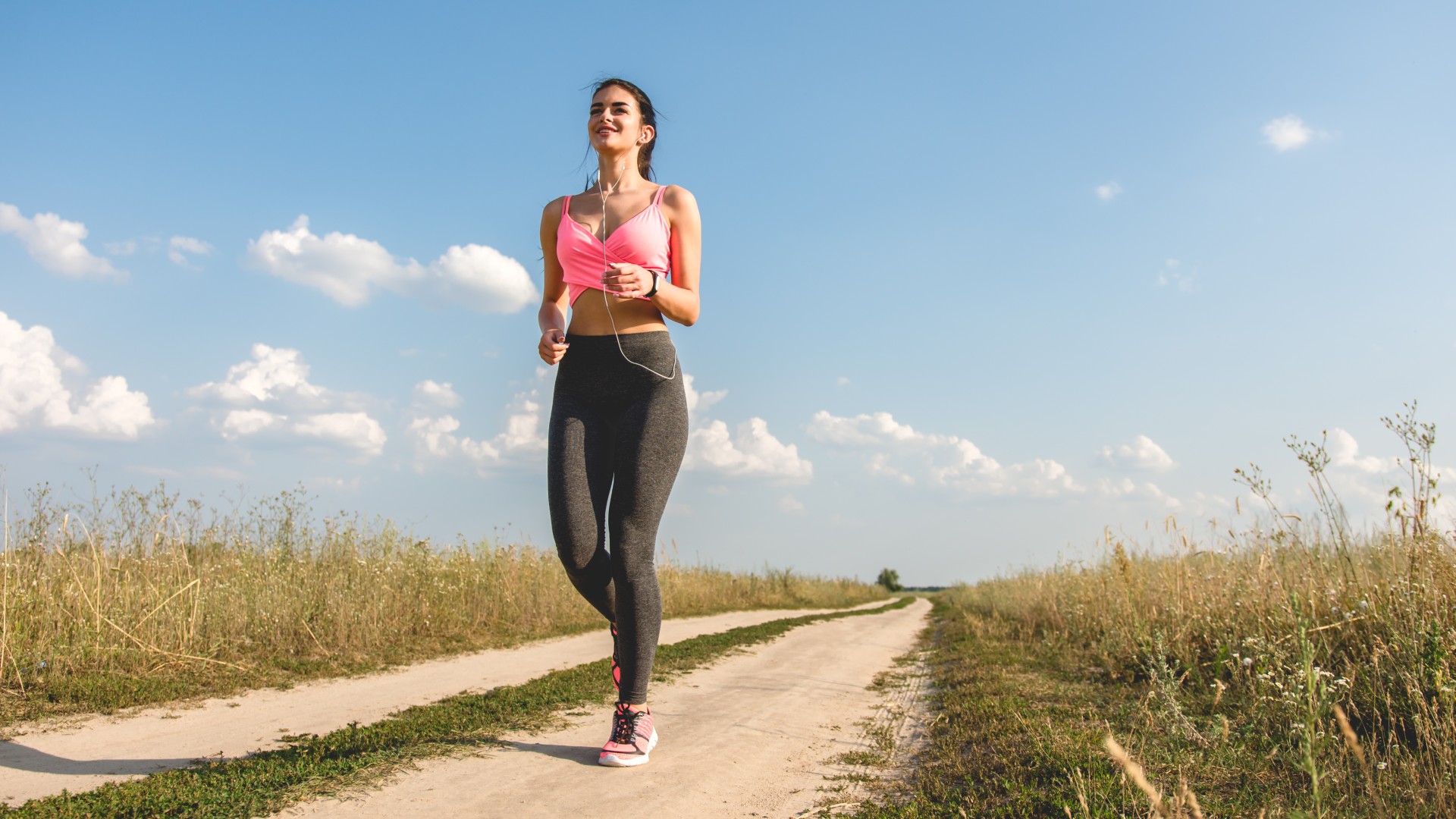
When I first stumbled across the fart walking trend, I thought I was losing my mind — walking after a meal is something we’ve been doing for years, right? The idea is that gentle movement after eating can boost digestion and ease uncomfortable symptoms of bloating, which can relieve gas and keep the metabolism ticking along.
I tried it anyway, and loved it. I do get bored easily, though, and because I walk my dog twice a day, I love finding new ways to keep things lively. More recently, I discovered ChiWalking, and I thought I’d give it a try in the evenings to boost my metabolism and mood after a long day at work.
Here’s what the walking method means, how to do ChiWalking and the benefits for your body. Could it replace fart walking for me? I found out.
What is "ChiWalking"?
According to ChiLiving, the method combines science with the principles of Tai Chi to create ChiWalking and ChiRunning. Specifically focusing on the former, the goal is to improve posture, increase joint mobility and engage the core muscles while relaxing the arms and legs to improve aches and pains associated with poor walking mechanics.
Tai chi is known to be low-impact and has its roots in Chinese martial arts, known also as a "meditation in motion." ChiWalking can help you stay active, hit your daily step count and increase mindfulness and mobility as you age.
How to do "ChiWalking"
I looked into ChiWalking for beginners and found a comprehensive ChiWalking video that I found easy to follow. Tai Chi walks vary in style and can depend on the Tai Chi you take up and the walking you enjoy; however, as a beginner, I stuck to the fundamentals.
If you plan to try it yourself, I recommend following the video step-by-step. I re-wound multiple times until I felt comfortable with the movements involved and could give it a try without glancing at my screen.
Get instant access to breaking news, the hottest reviews, great deals and helpful tips.
Here's what happened when I tried "ChiWalking"
If you enjoy power walking, hiking, or more vigorous styles of walking, this might not be for you. It’s slow and mindful, like a walking meditation, and focuses on building mindfulness, balance, coordination and lower-body stability. I found it surprisingly relaxing, given I’m a fast-paced person in both brain and body.
The most obvious benefit for me was ankle mobility. My ankles are really tight, and it takes a while to loosen them up before squats. The Chi steps are slow and deliberate, requiring you to balance on one leg at a time without the help of your arms. It takes concentration, which helped me stay present in the moment while putting my attention on my foot-ground connection.
You could do ChiWalking anywhere, but I chose to stick to my regular walking routine and add the Chi walks at various points when my dog was happily sniffing around and I could relax. After a few tries, I could perform the movements with my gaze forward or my eyes shut to test my balance further.
I am completely new to this walking method, and I won’t pretend to know much about it, but I found it useful for slowing down during walks rather than rushing to get it done. It's also clearly a winner for improving core activation and mobility if you suffer from tight joints, which could improve overall posture.
Regardless of the method, gentle movement after eating can help aid digestion and relaxation, easing stress that can also play havoc with your gut. It’s also an accessible way to avoid prolonged sedentary time in the evenings (or any time of day) and help burn off extra energy, contributing toward a healthy metabolism. Any movement you can accumulate through the day is good movement. Although this particular method is hardly a calorie-torcher.
Given the mindfulness nature of Tai Chi, I recommend ChiWalking in nature to drive home the sense of calm and rest for your nervous system. I started with a 30-minute walk in my nearby park, and added a few minutes of ChiWalking at the start, middle and end; you can adapt this to suit your lifestyle, though.
Overall, it helped me mix up my routine, and I quite enjoy learning a new skill. Given I'd never heard of the method before, I'm glad I stumbled across it during a recent YouTube rabbit hole. If you struggle to relax or you sit for long periods, this could be for you.
More from Tom's Guide
Follow Tom's Guide on Google News to get our up-to-date news, how-tos, and reviews in your feeds. Make sure to click the Follow button.
- How to lose weight and get in shape by walking
- 12-year study reveals the type of exercise that makes you live longer — it's not cardio
- I walk 5 miles every day without leaving the house — here’s how I do it

Sam Hopes is a level 3 qualified trainer, a level 2 Reiki practitioner and fitness editor at Tom's Guide. She is also currently undertaking her Yoga For Athletes training course.
Sam has written for various fitness brands and websites over the years and has experience across brands at Future, such as Live Science, Fit&Well, Coach, and T3.
Having coached at fitness studios like F45 and Virgin Active and personal trained, Sam now primarily teaches outdoor bootcamps, bodyweight, calisthenics and kettlebells.
She also coaches mobility and flexibility classes several times a week and believes that true strength comes from a holistic approach to training your body.
Sam has completed two mixed doubles Hyrox competitions in London and the Netherlands and finished her first doubles attempt in 1:11.
You must confirm your public display name before commenting
Please logout and then login again, you will then be prompted to enter your display name.

